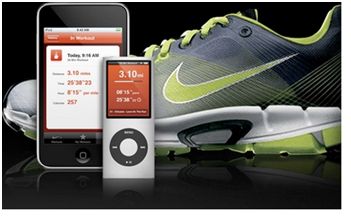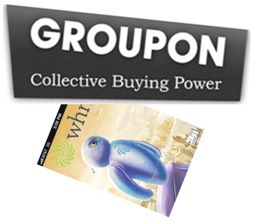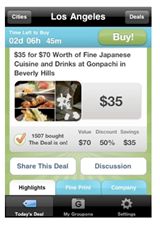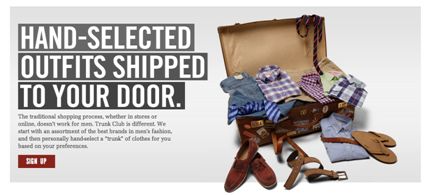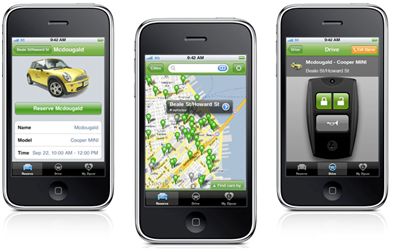Back in the day when Doris Day ruled the earth, brands just used to shout at us their stories of whiter than white and cleaner than clean. The communication was pretty much all one-way as they blared away on our one and only screen, the TV. We had little choice, either tune in or turn off.
Of course today is not like the 50s. In the enlightened 10s, things are supposedly much more democratic. Now we speak of brands and people being involved in two-way conversations. Our relationships with brands are more sociable and we, the people, are in the driving seat.
Technology has enabled this uprising and Mr Zuckerberg and his social media buddies believe the revolution will continue to be fuelled by the social apps that make the most of our recently-found connectivity. Zuckerberg goes as far as to say: “Social dynamics are going to work their way into every industry, and the companies of the future will be the ones that bake them in from the beginning, rather than slapping them on as an afterthought”.
Now a man who coined the phrase F-commerce probably would say that but it’s clear that the next generation choose interactive over passive media. As soon as we do anything, it’s possible for the world to know in an instant—broadcasting is now in the hands of the many and not the few. The trouble is, it’s relentless. We’re switched on 24/7 and brands are becoming ever so needy.
It’s no longer enough to complete the transaction and get on with life. Now you have to ‘engage’ with the brand, to play with the brand, to shape the future of the brand because now you’re inside the brand ‘experience’. And as more and more brands follow Zuckerberg’s mantra, brands are starting to become a real drag. Like clingy boyfriends or girlfriends, they demand constant care and attention. My guess is that, like nature, these things always have a way of biting back. Perhaps in contrast to high maintenance drag brands we’ll see the emergence of brands so slick and easy we’ll hardly know they’re there.
Born to play
It’s only natural that we like to interact with things around us, as we are all social animals. And learning through play is nothing new. The educationalist, Friedrich Frobel (1782-1852), even went as far as to develop the concept of kindergarten (children’s garden), believing that “play is the highest expression of human development in childhood for it alone is the free expression of what is in a child’s soul”. Companies like Zynga get this. Their mission, ‘connecting the world through games’, has led FarmVille, their farming simulation social network game, to be played by over 75 million people.
Once hooked, players spend real money on virtual goods like tractors to help them advance to higher levels. And although playing requires only short spurts of time, the game never ends, as Zynga’s designers keep adding levels so that players come back for more. This model has led Zynga to be valued at around $3billion.
The success of brands like Farmville means we now talk of gamification. An already over-used phrase, it’s how brands introduce gaming mechanics into non-game environments to increase engagement, loyalty, and fun! Nike was one of the first to gamify a product to leverage sales when they partnered with Apple to create Nike+.
Nike+ tracks data about your workout via a chip in your Nike+ sneakers and syncs up with your computer. Once you’ve got your stats on your computer, you can publish them online in the Nike+ community, where users can share workout stats with friends or strangers, challenge other users, or set and track personal fitness goals. If you reach a goal or accomplishment, there are badges and awards that you get to rock on your user profile. What is particularly smart about this form of gamification is that it’s mostly sustained by the Nike+ tribe, who naturally love to compete, creating a buzz through evangelising about their efforts.
Gaming wars
Brands’ desire for play means the gaming war is really hotting up. The upshot is more demands on us although the clever ones like Groupon are acquiring other brands and skill sets that enable them to offer us more of a win:win.
In the past, Groupon has been all about helping people discover deals. Now it’s bought Pelago, maker of local discovery app Whrrl, in a bid to improve its ability to bring together people and local discount offers. The acquisition could also mean a broader direction for Groupon as it looks to expand beyond daily deals to more mobile and personalised discounts. Using Whrrl’s technology could help Groupon move into hyper-local offers matching your personal interests. Using Whrrl’s real-time technology, Groupon could help find relevant deals for users as they move about a city. It might happen through a check-in process or it could be through something else like geo-fencing or plain GPS.
Gamification already involves huge numbers of people. Zynga has 269 million monthly users on Facebook, and Groupon has around 83 million subscribers, 16 million of which have bought a groupon. Both are only a few years old —still in their infancy – so it remains to be seen how all this will play out.
Ssh . . .quiet branding going on
The big thing drag brands fail to take notice of is time. This is the one thing that’s often in short supply in this day and age. With their clingy, needy ways, drag brands drain us of our vital energy. Perhaps that’s why we may soon be seeing the murmurings of a quiet revolution. One where there’s no fuss, just brands that help people to get on with life.
For example, Sainsbury’s in the UK is looking to give people the confidence that they don’t need to spend time shopping around for branded goods. The new Sainsbury’s Brand Match scheme, trialled in Northern Ireland, is a price incentive that gives the difference back to the shopper if comparable branded grocery basket is cheaper at either Asda or Tesco on the same day: no ifs, no buts, no fuss, just a coupon.
Trunk Club is a shopping service for men, which assigns each customer his own style advisor who sends him clothes based on his personal profile and individual webcam consultations. With no monthly membership fees and the consultant’s time included free of charge, it is by no means exclusive or inaccessible (although it is clearly aimed at wealthier customers).
And Zipcar’s iPhone app is easier than hiring, allowing members of the car sharing service to find, reserve and unlock vehicles using their mobile device. And there’s a cool bonus: you can honk your Zipcar’s horn to find it in a crowd and lock/unlock it, all from your phone.
So if you’re feeling needy just take a good look at yourself in the mirror and question whether you need to be in every part of people’s lives during every part of their day. Sometimes it’s good just to offer quiet companionship!
About the Author

Greg Taylor became founding partner in global brand design consultancy Elmwood in 1989. Now Director of Brand Provocation, Greg is the creator and facilitator of Step Change™, Elmwood’s strategic tool for moving ideas forward. Clients include ASDA, Wal-Mart, Arla Foods, BBC, COI (Defra and DfT), Cable&Wireless, Comic Relief, Debbie & Andrew’s, Durex, Glasgow 2014 Commonwealth Games, McCain, and the Met Office.

